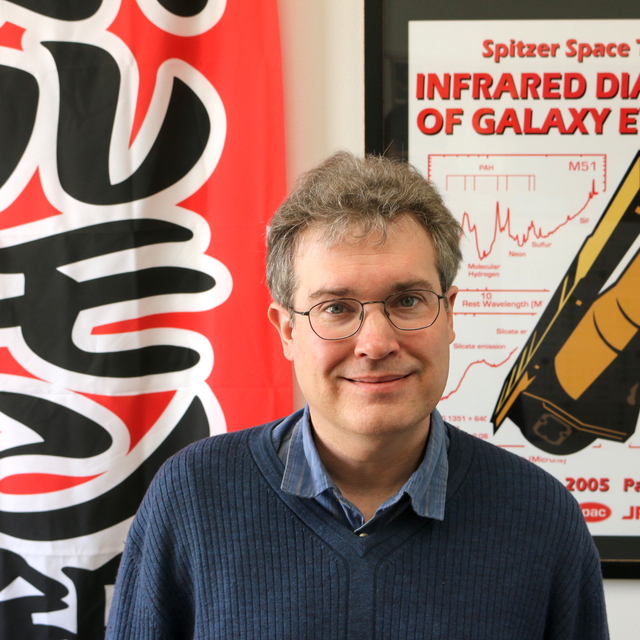
The Emergence of a Brightest Cluster Galaxy in a Protocluster Core at z = 2.24
March 2024 • 2024ApJ...963...21S
Abstract • We report the detection of a pair of massive quiescent galaxies likely in the process of merging at the center of the spectroscopically confirmed, extremely massive protocluster BOSS1244 at z = 2.24 ± 0.02. These galaxies, BOSS1244-QG1 and BOSS1244-QG2, were detected with Hubble Space Telescope grism slitless spectroscopic observations. These two quiescent galaxies are among the brightest member galaxies, with z = 2.223–2.255 in BOSS1244, and reside at redshifts z = 2.244 and z = 2.242, with a half-light radius of 6.76 ± 0.50 kpc and 2.72 ± 0.16 kpc, respectively. BOSS1244-QG1 and BOSS1244-QG2 are separated by a projected distance of about 70 physical kpc, implying that the two galaxies likely merge to form a massive brightest cluster galaxy (BCG) with size and mass similar to the most massive BCGs in the local Universe. We thus infer that BCG formation through dry major mergers may happen earlier than the full assembly of a cluster core, which broadens our previous understanding of the coevolution of mature galaxy clusters and BCGs in the nearby Universe. Moreover, we find a strong density–star formation relation over a scale of ∼18 comoving Mpc in BOSS1244, i.e., star formation activity decreases as density increases, implying that the quenching of star formation in BCGs and their progenitors is likely governed by environment-related processes before the virialization of the cluster core.
Links
- PREPRINT http://arxiv.org/abs/2303.09726
- NED https://ned.ipac.caltech.edu/uri/NED::InRefcode/2024ApJ...963...21S
- ELECTR https://doi.org/10.3847/1538-4357/ad17c3
- SIMBAD https://simbad.u-strasbg.fr/simbad/sim-ref?querymethod=bib&simbo=on&submit=submit+bibcode&bibcode=2024ApJ...963...21S
- PDF https://iopscience.iop.org/article/10.3847/1538-4357/ad17c3/pdf
- DATA https://archive.stsci.edu/mastbibref.php?bibcode=2024ApJ...963...21S
- DATA https://hst.esac.esa.int/ehst/#/pages/search;bibcode=2024ApJ...963...21S



